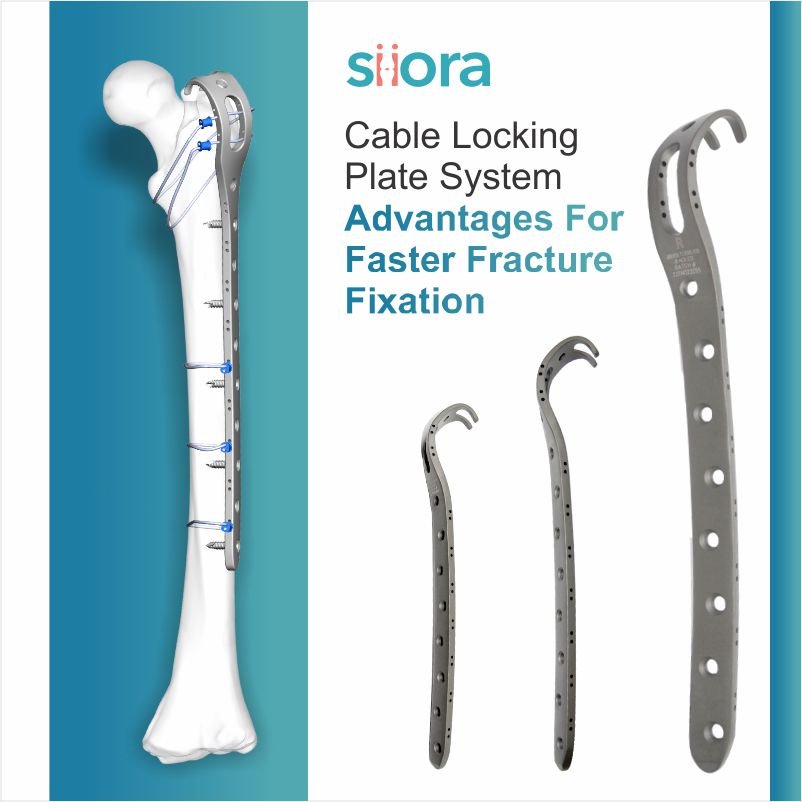For many struggling with hip pain and limited mobility, hip replacement surgery offers a ray of hope. But within the world of hip replacements, there are different options to consider. One such option is the bipolar prosthesis, a specific type of implant used in a procedure called bipolar hip arthroplasty.
This blog delves into the world of bipolar prostheses, explaining what they are, their advantages and disadvantages, who might be a good candidate for this type of surgery and more.
What is a Bipolar Hip Prosthesis?
Imagine a ball and socket joint which is your hip joint. In a healthy hip, the ball (femoral head) at the top of the thighbone fits snugly into the socket (acetabulum) of the pelvis. When the ball or socket becomes damaged due to conditions like arthritis, hip fractures, or avascular necrosis, movement becomes painful and restricted.
A hip replacement replaces the damaged parts. In a total hip replacement, both the ball and socket are replaced with artificial components. However, in a bipolar hip arthroplasty, only the ball of the femur is replaced with a special implant called a bipolar prosthesis.
The bipolar prosthesis itself is a two-part implant. It has a metal stem that fits into the hollow shaft of the femur and a smooth, articulating head. However, the key difference from a standard hip replacement is that the head in a bipolar prosthesis has two articulating surfaces.
- The inner surface of the head is typically made of metal and connects to the stem.
- The outer surface is made of a low-friction material like plastic or ceramic.
This two-part design allows for a bit of additional movement within the head itself, reducing stress on the bearing surfaces and potentially improving implant longevity.
What is the Difference between Total Hip Replacement and Bipolar Hip Arthroplasty?
Before diving into bipolar, let’s establish the context. There are two main categories of hip replacement surgery: hemiarthroplasty and total hip replacement (THR).
Bipolar Hip Arthroplasty or Hemiarthroplasty
This procedure replaces only the damaged ball (femoral head) of the hip joint with a prosthetic component. The natural socket (acetabulum) is left untouched. This is typically preferred for younger patients with specific fractures or conditions like avascular necrosis.
Total Hip Replacement (THR)
Here, both the ball and the socket are replaced with artificial components. This is a more extensive surgery but offers greater stability and is often chosen for patients with advanced arthritis or joint degeneration.
When is a Bipolar Prosthesis Preferred?
Surgeons might choose a bipolar prosthesis over other options for several reasons:
Femoral neck fractures
In certain cases of fractured femur necks, especially in younger, active patients, a bipolar prosthesis can offer a good balance of stability and mobility. The additional articulation within the bearing allows for some movement, which can be beneficial for long-term function.
Avascular necrosis (AVN)
This condition cuts off blood supply to the femoral head, leading to bone degeneration. A bipolar prosthesis can replace the damaged bone while preserving a healthy acetabulum.
Poor bone quality
In patients with weak or compromised bone stock, a bipolar prosthesis with a cemented femoral stem might be preferred. The cement helps provide additional stability and anchorage for the implant.
Revision surgery
Sometimes, a previously implanted hip replacement might need revision surgery. In such cases, a bipolar prosthesis can be a viable option, especially if the acetabular component is still in good condition.
What Are the Advantages of Bipolar Hip Arthroplasty?
While bipolar hip arthroplasty isn’t the answer for everyone, it offers some distinct advantages:
Bone Preservation
Compared to a total hip replacement, bipolar arthroplasty requires less bone removal from the femur. This can be beneficial for younger patients or those with weaker bone stock.
Reduced Wear and Tear
The dual bearing surfaces in the bipolar head are designed to distribute stress more evenly, potentially leading to less wear and tear on the implant over time. This can translate to a longer lifespan for the prosthesis.
Improved Stability
The bipolar design can offer greater stability compared to some other hip replacement options, particularly in situations where the socket (acetabulum) is damaged or weakened.
What Are the Disadvantages of Bipolar Hip Arthroplasty?
Though it has advantages, bipolar hip arthroplasty also comes with some drawbacks:
Limited Range of Motion
The additional articulation within the bipolar head can limit the overall range of motion in the hip joint compared to a total hip replacement. This might be a concern for very active individuals.
Increased Risk of Dislocation
The bipolar design, while offering stability in some cases, can also be more prone to dislocation than a total hip replacement, especially in younger, more active patients.
Revision Surgery
While less common than with other implant designs, there’s a possibility that the bipolar head itself may wear out over time, necessitating revision surgery to replace just the head.
Who is a Good Candidate for Bipolar Hip Arthroplasty?
The decision to choose a bipolar prosthesis depends on several factors, including:
Age and Activity Level
Younger, more active individuals might not be ideal candidates due to potential limitations in movement and increased risk of dislocation.
Underlying Condition
The cause of hip damage plays a role. Bipolar prostheses might be suitable for fractures or avascular necrosis, but may not be the best choice for severe arthritis.
Bone Quality
Patients with weaker bone stock might benefit from the bone preservation offered by bipolar arthroplasty.
Discussion with the Doctor
If you’re facing hip pain and exploring treatment options, a crucial step is a thorough consultation with your doctor or orthopedic surgeon. Discuss your symptoms, medical history, lifestyle, and expectations. They will conduct a physical examination, imaging tests (X-rays, MRIs), and assess your overall health to determine the best course of action.
Bipolar hip arthroplasty can be a life-changing procedure for many, offering pain relief and improved mobility. By understanding the benefits and drawbacks, and having an open conversation with your doctor, you can make an informed decision about whether a bipolar prosthesis is the right choice for you.
Introduction to Siora
Siora Surgicals Pvt. Ltd. is a leader in the orthopedic implant manufacturing industry worldwide. Being in this industry for 30+ years, the company has established a wide distributor network across 50+ countries. Siora manufactures hundreds of different types of CE-certified implants that fall under 20+ different categories. All the processing is done in its in-house production facility. Above all, Siora is also looking for opportunities to become a trustworthy Supplier for Orthopedic Implants in Thailand. It is also an experienced OEM service provider globally.








